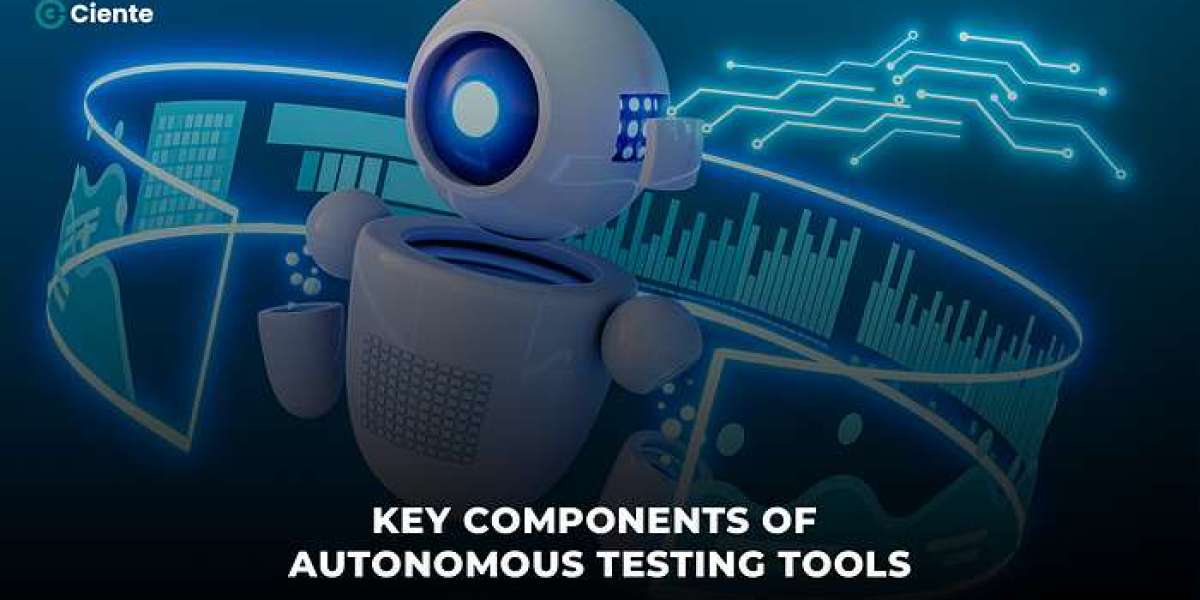The software development landscape is constantly evolving, demanding faster release cycles and unwavering quality. Traditional testing methods, while valuable, often struggle to keep pace with this rapid change. Enter autonomous testing tools, a revolutionary approach powered by Artificial Intelligence (AI) and Machine Learning (ML) that promises to transform the way we test software.
Autonomous testing tools go beyond simple automation. They leverage intelligent algorithms to learn, adapt, and make decisions independently, significantly reducing human intervention in the testing process. This translates to several key components that differentiate them from traditional tools:
1. AI and Machine Learning Technologies:
The heart of autonomous testing tools lies in their AI and ML capabilities. These tools analyze application behavior, historical test data, and user interactions to gain insights into the software’s functionality. This empowers them to:
· Identify patterns and anomalies: ML algorithms can detect subtle changes in application behavior that might indicate potential issues. This proactive approach helps uncover bugs before they become major problems.
· Predict user behavior: By analyzing user interaction data, autonomous tools can predict common usage patterns and tailor test cases accordingly. This ensures comprehensive coverage of real-world scenarios.
· Learn and adapt: Autonomous testing tools continuously learn from test results. They can adapt to changes in the application, automatically update test cases, and even prioritize tests based on risk factors.
2. Automated Test Case Generation:
One of the most significant advantages of autonomous testing tools is their ability to generate test cases automatically. This eliminates the need for manual test script creation, a time-consuming and laborious process. AI algorithms can:
· Derive test cases from requirements and specifications: By analyzing software requirements and user stories, autonomous tools can generate test cases that target specific functionalities.
· Explore edge cases and complex scenarios: AI can delve deeper than traditional methods, identifying and testing edge cases and complex scenarios that might be overlooked by human testers.
· Continuously optimize test suites: As the application evolves, autonomous tools can automatically update test suites to ensure ongoing relevance and effectiveness.
3. Integration with Development and Deployment Tools:
For seamless integration into modern development workflows, autonomous testing tools seamlessly integrate with Continuous Integration/Continuous Deployment (CI/CD) pipelines. This allows for:
· Automated test execution: Tests are triggered automatically after every code commit or build, ensuring continuous feedback and rapid bug identification.
· Faster release cycles: By automating testing within the CI/CD pipeline, autonomous tools expedite release cycles, allowing for quicker deployments and improved time-to-market.
· Improved collaboration: Integration with development tools fosters closer collaboration between developers and testers, leading to a more efficient and streamlined development process.
4. Real-Time Reporting and Analytics:
Autonomous testing tools provide real-time insights into the testing process with comprehensive reporting capabilities. This includes:
· Detailed test results: Reports provide detailed information on pass/fail status, identified bugs, and execution times for each test case.
· Actionable insights: AI-powered analytics can identify trends, predict potential issues, and prioritize bug fixes based on severity and impact.
· Improved decision-making: Real-time data empowers teams to make informed decisions about software quality, resource allocation, and release schedules.
The Future of Testing: A Symbiotic Approach
While autonomous testing tools offer tremendous benefits, they are not meant to replace human testers entirely. The future of software testing lies in a symbiotic approach where AI and human expertise work together.
Autonomous testing tools handle the repetitive aspects of testing, freeing up testers to focus on high-level tasks like strategic test planning, exploratory testing, and user experience evaluation. This combined approach ensures comprehensive test coverage, improved quality, and efficient resource utilization.
Conclusion
Autonomous testing tools represent a significant leap forward in the software testing landscape. By leveraging AI and ML, these tools automate repetitive tasks, generate comprehensive test cases, and provide real-time insights. As the technology continues to evolve, autonomous testing tools are poised to revolutionize the way we ensure software quality, allowing development teams to deliver high-quality applications faster and more efficiently.







